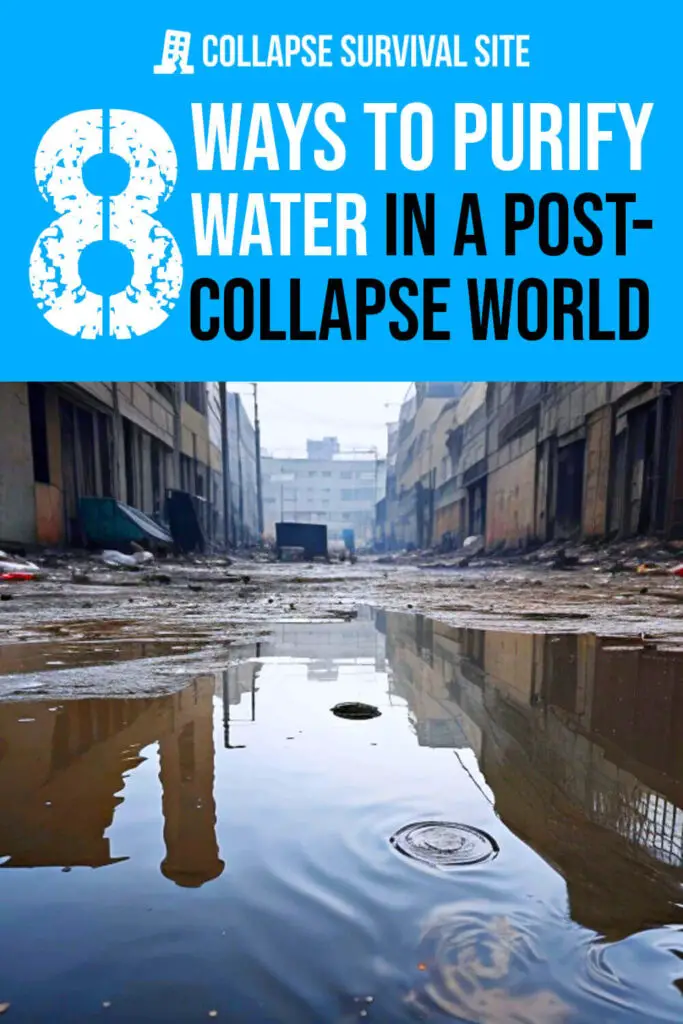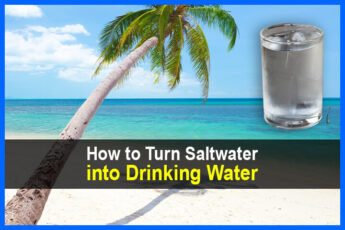Estimated reading time: 7 minutes
In November of 2022, a water treatment plant outside Houston lost water pressure due to a power outage. The situation prompted the Texas Commission on Environmental Quality to issue a boil water notice that affected 2.2 million residents.
A train derailment in February 2023 in East Palestine, Ohio, caused grave concerns about chemicals in the local water supply. And more recently, the catastrophic floods in Vermont prompted “do not drink” orders and boil water notices in multiple municipalities.
Meanwhile, although there’s no official count, an estimated 240,000 water main breaks happen every year. These incidents may not make national headlines, but they disrupt the water supply of millions of Americans.
Aging infrastructures combined with more frequent and more severe weather events are playing havoc with our water systems. And chances are increasing that – if you haven’t already — you will face a situation where your local government can no longer provide clean water for a period of days or even weeks.
What can you do if the water coming out of your tap at home is unsafe to drink? Here are ways to purify your water at home.
Want to save this post for later? Click Here to Pin It On Pinterest!
Boiling
The Centers for Disease Control (CDC) puts it in basic terms by stating on its website that it issues a Boil Water Advisory when “your community’s water has, or could have, germs that can make you sick.” The agency’s advice is to use boiled or bottled water for drinking and to prepare and cook food when your area is under this advisory.
Here are the steps for boiling water as a purification method. Bring water to a boil and let it maintain a rolling boil for three minutes. Then cover the pot and let the water cool before drinking. (If you live in a high-altitude area, boil for five minutes.)
Filtration
Water filtration is another method for purifying water. These products and systems generally fall into two basic categories. One type uses a carbon or ceramic filter and the other treats water with a chemical. (We’ll discuss chemicals in the upcoming sections.)
Carbon filters remove contaminants through the process of adsorption. In adsorption, contaminants are attracted to the surface of the activated carbon in much the same way a magnet attracts iron filings.
Activated carbon can remove chlorine, pesticides, chloroform, and some components of gasoline, solvents, and industrial cleaners from water. You can purchase a home carbon filtration system or build one yourself.
Note: The CDC recommends boiling even filtered water during a Boil Water Advisory. That’s because filters may not be able to remove all the impurities.
Distillation
Distillation is a process that uses heat to collect water in its vapor form. In other words, water is left rolling at the boiling point until it becomes a vapor. Then the vapor (or gas) is sent into a condensing unit. After it cools, the vapor is changed back into a purified liquid.
Distillation is effective in removing germs, bacteria, salts, and some heavy metals. However, it is a slow process, and it usually is not cost-effective on a large scale. However, it can be a viable option for purifying small quantities of water. Here’s how to distill water at home.
Chlorination
Chlorine kills germs, parasites, and other disease-causing microorganisms found in groundwater or tap water. You can find tablet and liquid forms of chlorine to treat drinking water, and in an emergency, you can use household liquid bleach that has 5.25 percent sodium hypochlorite. (Avoid scented or color-safe bleaches or bleach that has additives.)
Add four to five drops of liquid chlorine bleach to one gallon of water. One teaspoon of bleach can disinfect five gallons of water. Mix well and allow the treated water to stand for 30 minutes before using. Treated water should have a slightly chlorinated taste.
Liquid chlorine bleach loses strength over time, so fresh bleach is best for water disinfection. Note: People with thyroid problems should talk to a doctor before drinking chlorinated water.
Iodine
Iodine, available in tablet or liquid form, kills bacteria and viruses in water. However, it can add an unpleasant taste and can be dangerous when taken in high doses.
If other options aren’t available, you can add five drops of 2% tincture of iodine to a quart of water. (If the water is cloudy, add 10 drops of iodine.) Stir and let the water stand for 30 minutes before use.
Water purification tablets
Many outdoor supply retailers carry water purification tablets that contain chlorine, iodine, chlorine dioxide, and other disinfecting agents. Follow directions on the package carefully, as different products have different strengths.
These tablets are typically designed for outdoor emergencies. Extended use can build up chemicals in your body to toxic levels.
Ultraviolet Light
Did you know you can use the sun’s rays to purify water? Treating water with ultraviolet light works best if you filter the water first. However, if you have no other means to clean your water, you can kill some dangerous organisms with the sun’s radiation.
An emergency method involves filling a plastic bottle with water, shaking the bottle vigorously to help activate the oxygen, and then letting it lie horizontally in the sunlight for a minimum of one day. Some studies show that adding lime juice can speed up the process.
For a more permanent solution, you can purchase a UV light system for your home. This video explains how a UV system works.
Reverse Osmosis
Reverse Osmosis is another option for purifying water. This process forces water through a semipermeable membrane to remove contaminants. This video shows how it works on a large scale, and this video describes reverse osmosis systems for your home.
Note: Although this method is safe and effective, it is expensive, requires maintenance, and wastes more water than it produces.
General tips for home water purification
The cause of your water problem will determine what steps you need to take to purify water. Each situation may be unique. It may range from a water main break that allows contaminants to enter the water supply to a chemical spill that leaches into groundwater.
If your municipal supply of water is deemed unsafe, aim to get as much information as you can. Some of the above methods can be combined. For example, you could filter the water and then boil it for added safety.
If you are using a chemical as a purifying agent, the amount of the chemical you will need will depend on the water quality and temperature. For example, murky or cold water needs a little more disinfectant than warm or clear water.
You can build your own emergency water filter to remove odors and debris. Layer a mix of play sand, gravel, and activated carbon in a bucket that has been drilled with a hole. Here are the instructions from Mother Earth News. And this video shows how to make an easy DIY water filter system.
How much water do we need to survive?
Three to five days is the average time someone can live without water. That range can be dramatically shorter in extreme heat and humidity (such as much of the world is experiencing in 2023). It makes sense to plan ahead as much as possible by ensuring you have at least a three-day water supply for each person and animal in your household.
Estimates are that the average American uses 82 gallons of water per day at home. However, a significant factor in that amount is toilet flushing, followed by bathing. For emergency purposes, the CDC recommends storing a minimum of one gallon of water per person per day for three days for drinking and sanitation purposes. Since many emergencies last longer than three days, a two-week supply is optimal.
If you live in an area plagued by severe weather events (and that is getting to be more and more of us), get in the habit of taking some proactive habits. By filling the bathtub, sinks, washing machine, and other large containers with water, you’ll have a limited supply of clean water in case of emergency.
For more information, we found this FAQ sheet about boil water notices to be helpful. And here are some emergency water storage and purification resources you may want to check out.
- Make Water Safe During An Emergency fact sheet
- Home Water Storage Guide
- Emergency Water Guide
- Reasons and Benefits of Installing a Home Water Filtration System by Pamela Jose
- Basic Guide to Water Wells, Sources, Filtration and Pumps by Paul R. Wonning
- Water Purification by James Brooks
Like this post? Don't Forget to Pin It On Pinterest!









